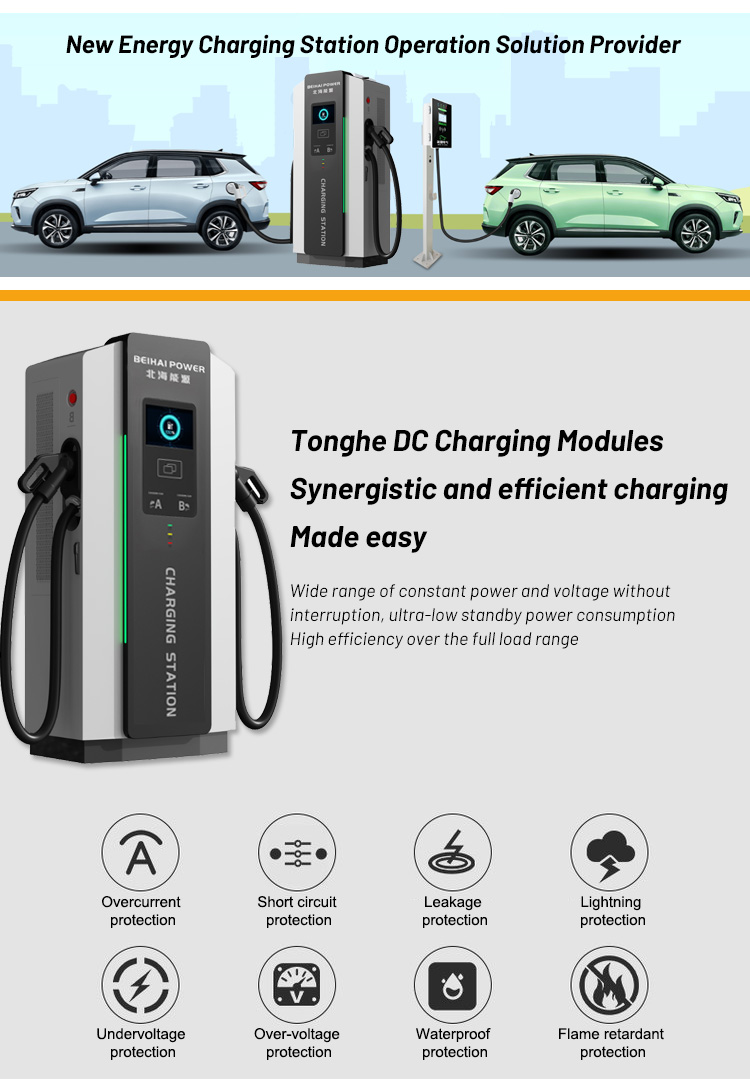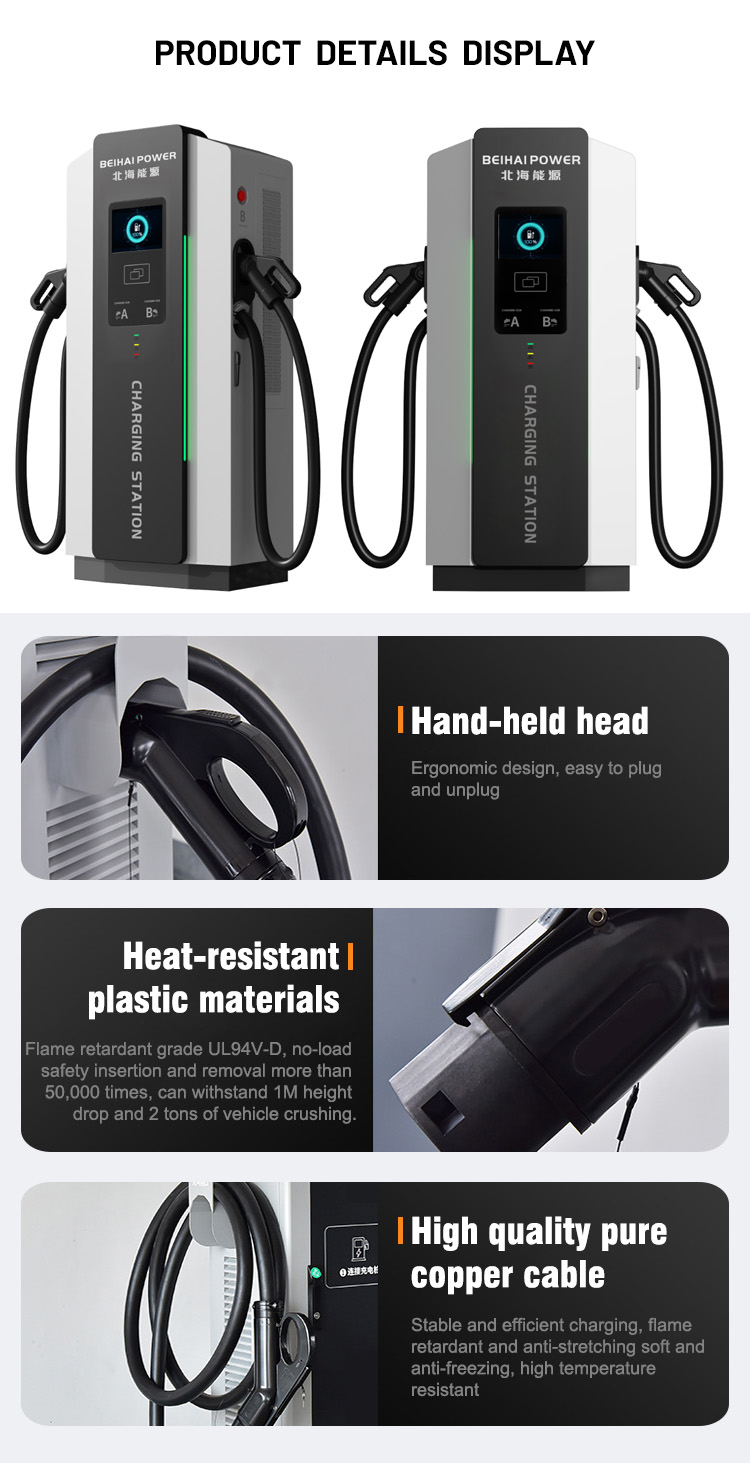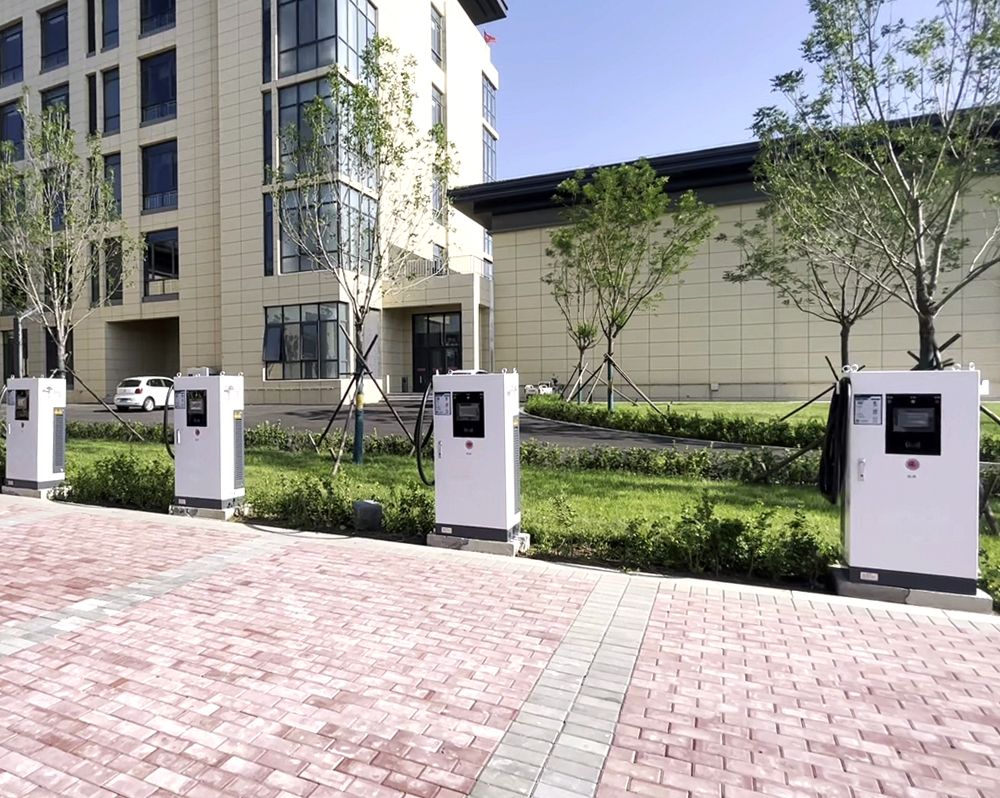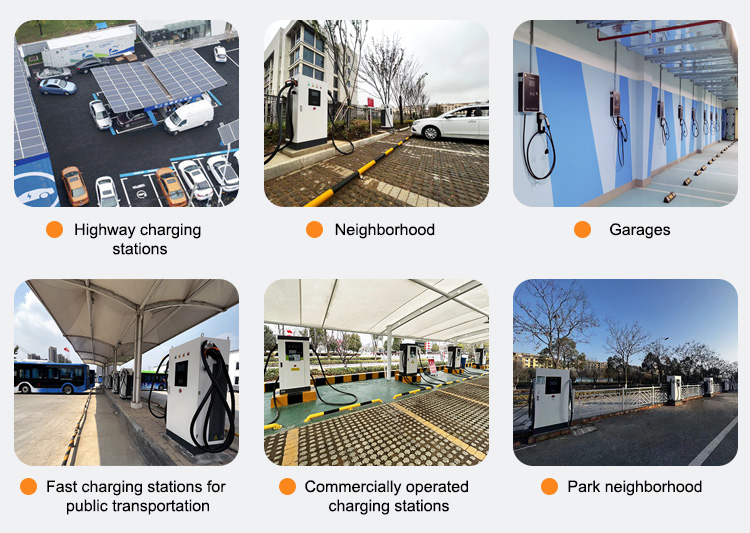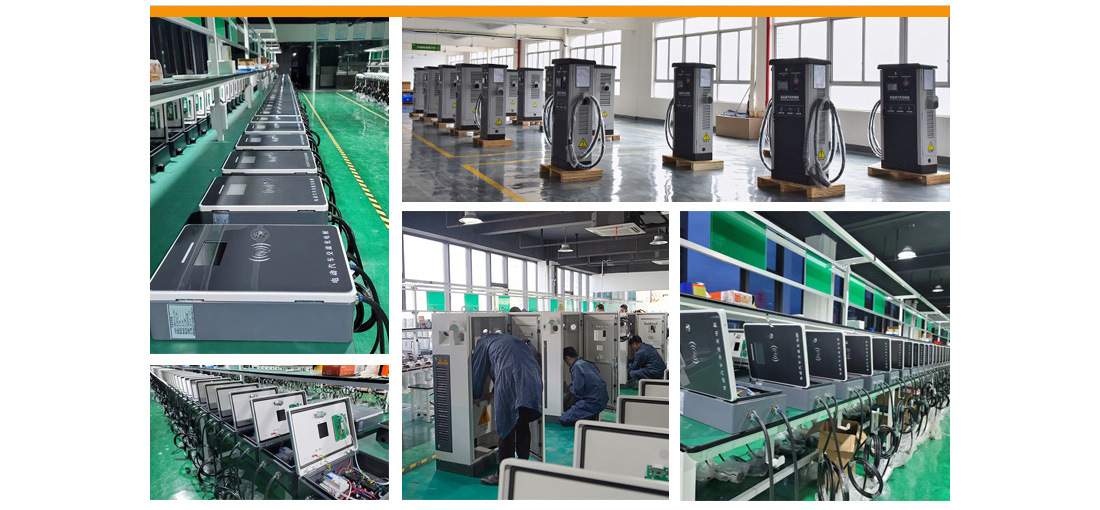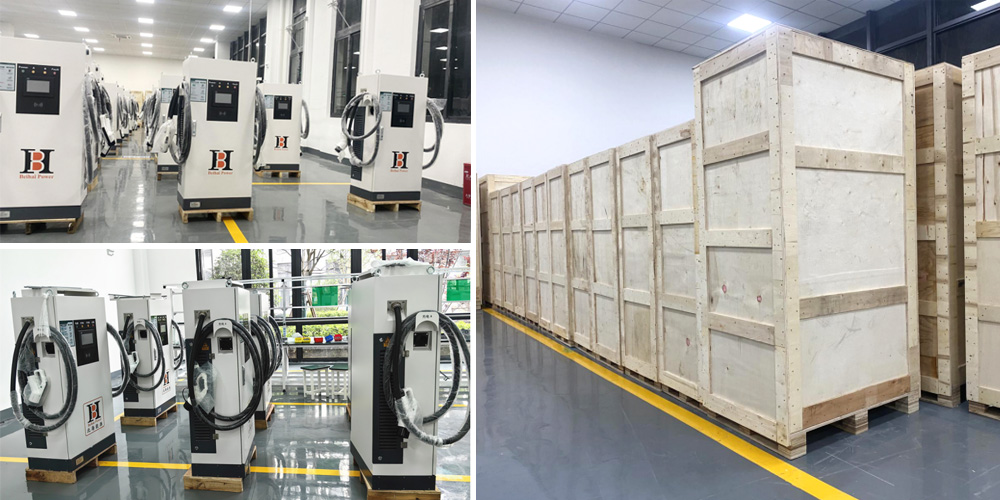180kw DC Charging Station CCS2 EV charging Pile Floor Type Double Gun EV Charger For Commercial
Product Description:
As electric vehicles (EVs) gain traction in the market, the need for efficient and rapid charging solutions has become critical. DC fast charging stations are at the forefront of this transformation, providing the speed and convenience necessary for modern electric vehicle infrastructure.
DC fast charging (DCFC) technology allows for the delivery of high voltage direct current to electric vehicles, significantly reducing charging times compared to traditional AC charging. Unlike AC charging, which converts the electricity from alternating current to direct current within the vehicle, DCFC supplies direct current directly to the vehicle’s battery. This bypasses the on-board charger, enabling much faster charging.
DC fast chargers typically operate at power levels ranging from 50 kW to 350 kW, depending on the model and application. The higher the power level, the quicker the charging process. For instance, a 150 kW charger can replenish approximately 80% of an EV’s battery in about 30 minutes, making it ideal for long-distance travel.
The charging process at a DC fast charging station involves several stages: Initialization: When a vehicle connects to the charger, the control system establishes communication with the vehicle’s onboard charger. It verifies the vehicle’s compatibility and the state of the battery.Charging Phase: The charger delivers DC power directly to the battery. This phase is typically divided into two stages: the constant current (CC) stage and the constant voltage (CV) stage. Initially, the charger supplies a constant current until the battery reaches a specific voltage. Then, it switches to constant voltage mode to ensure safe and efficient charging. Termination: Once the battery reaches its maximum state of charge, the charging process is terminated to prevent overcharging. The control system communicates with the vehicle to ensure a safe disconnect.
Product Parameters:
| BeiHai DC EV Charger | |||
| Equipment Models | BHDC-180kw | ||
| Technical parameters | |||
| AC input | Voltage range (V) | 380±15% | |
| Frequency range (Hz) | 45~66 | ||
| Input power factor | ≥0.99 | ||
| Fluoro wave (THDI) | ≤5% | ||
| DC output | workpiece ratio | ≥96% | |
| Output Voltage Range (V) | 200~750 | ||
| Output power (KW) | 180KW | ||
| Maximum Output Current (A) | 360A | ||
| Charging interface | 2 | ||
| Charging gun length (m) | 5m | ||
| Equipment Other Information | Voice (dB) | <65 | |
| stabilized current precision | <±1% | ||
| stabilized voltage precision | ≤±0.5% | ||
| output current error | ≤±1% | ||
| output voltage error | ≤±0.5% | ||
| current sharing unbalance degree | ≤±5% | ||
| machine display | 7 inch color touch screen | ||
| charging operation | swipe or scan | ||
| metering and billing | DC watt-hour meter | ||
| running indication | Power supply, charging, fault | ||
| communication | Ethernet(Standard Communication Protocol) | ||
| heat dissipation control | air cooling | ||
| the charge power control | intelligent distribution | ||
| Reliability (MTBF) | 50000 | ||
| Size(W*D*H)mm | 990*750*1800 | ||
| installation method | floor type | ||
| work environment | Altitude (m) | ≤2000 | |
| Operating temperature(℃) | -20~50 | ||
| Storage temperature(℃) | -20~70 | ||
| Average relative humidity | 5%-95% | ||
| Optional | 4G wireless communication | Charging gun 8m/10m | |
Product Feature:
DC charging piles are widely used in the field of electric vehicle charging, and their application scenarios include, but are not limited to, the following aspects:
AC Input: DC chargers first input AC power from the grid into a transformer, which adjusts the voltage to suit the needs of the charger’s internal circuitry.
DC Output: The AC power is rectified and converted to DC power, which is usually done by the charging module (rectifier module). To meet high power requirements, several modules can be connected in parallel and equalised via the CAN bus.
Control unit: As the technical core of the charging pile, the control unit is responsible for controlling the charging module’s switching on and off, output voltage and output current, etc., to ensure the safety and efficiency of the charging process.
Metering unit: The metering unit records the power consumption during the charging process, which is essential for billing and energy management.
Charging Interface: The DC charging post connects to the electric vehicle through a standard-compliant charging interface to provide DC power for charging, ensuring compatibility and safety.
Human Machine Interface: Includes a touch screen and display.
Application:
Dc charging piles are widely used in public charging stations, highway service areas, commercial centers and other places, and can provide fast charging services for electric vehicles. With the popularization of electric vehicles and the continuous development of technology, the application range of DC charging piles will gradually expand.
Public transport Charging:DC charging piles play a vital role in public transport, providing fast charging services for city buses, taxis and other operating vehicles.
Public places and commercial areas Charging: Shopping malls, supermarkets, hotels, industrial parks, logistics parks and other public places and commercial areas are also important application areas for DC charging piles.
Residential area Charging:With electric vehicles entering thousands of households, the demand for DC charging piles in residential areas is also increasing
Highway service areas and petrol stations Charging: DC charging piles are installed in highway service areas or petrol stations to provide fast charging services for EV users travelling long distances.
Company Profil
Products categories
-

Phone
-

E-mail
-

Whatsapp
-

Top






